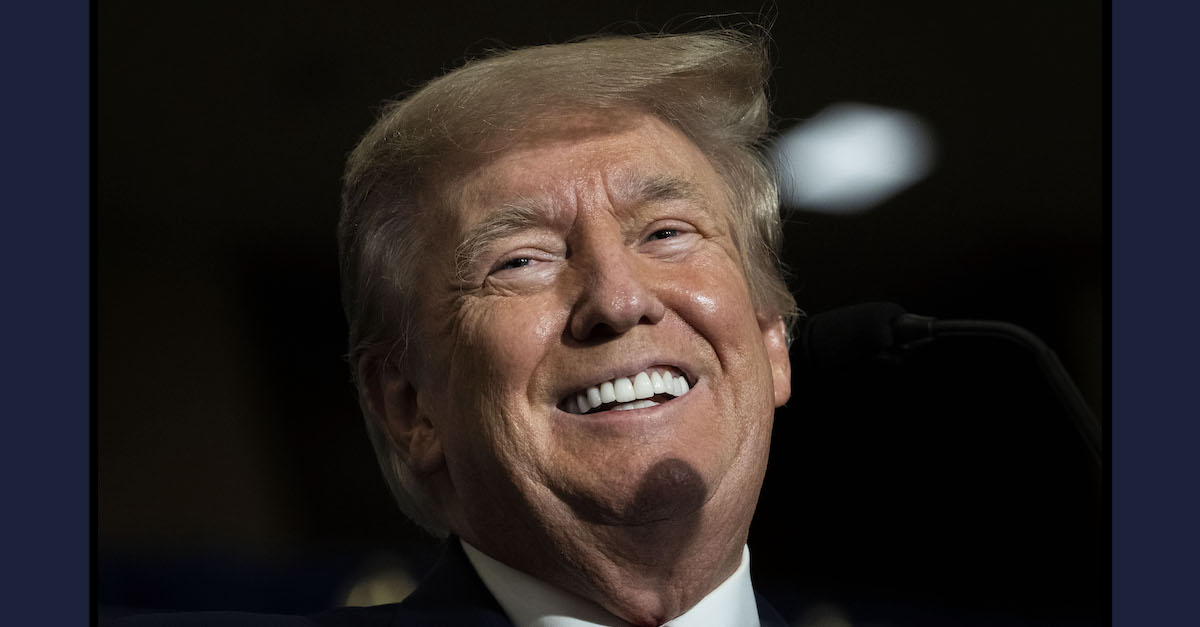
Former U.S. President Donald Trump speaks during a rally on July 26, 2022 in Washington, D.C.
Legal experts cautioned against reading too much into a report that then-President Donald Trump shared classified information on Twitter that came from a secretive U.S. spacecraft in 2019.
On Aug. 29, 2019, the space program for the Islamic Republic of Iran suffered a substantial loss as a rocket exploded on the launch pad.
Trump sought to allay any concerns that the U.S. intelligence community was behind the failure.
“The United States of America was not involved in the catastrophic accident during final launch preparations for the Safir SLV Launch at Semnan Launch Site One in Iran, Trump tweeted. “I wish Iran best wishes and good luck in determining what happened at Site One.”
Appended to the tweet was a high-resolution image detailing the scene of the incident. As it turns out, according to a Freedom of Information Act request by NPR, the document Trump shared was, at the time he shared it, classified – but has since been declassified.
Reporter Geoff Brumfiel explains:
Now, three years after Trump’s tweet, the National Geospatial-Intelligence Agency (NGA) has formally declassified the original image. The declassification, which came as the result of a Freedom of Information Act request by NPR, followed a grueling Pentagon-wide review to determine whether the briefing slide it came from could be shared with the public.
According to Business Insider, Trump saw the image during a daily intelligence briefing on the morning the Iranian rocket failed. According to Yahoo! News, he then asked to keep a copy of the photograph, which was taken by the KH-11 series satellite. The image Trump ultimately shared was a photograph – likely taken with a cellular phone camera – of the purported satellite image.
The report goes on to note that many of the details on the image remain redacted and that the U.S. intelligence community was likely caught off guard, to say the least, by the 45th president sharing the image to millions of people on the microblogging website.
Trump shrugged off the criticism.
“We had a photo and I released it, which I have the absolute right to do,” he told reporters at the time.
Legal experts say Trump was correct in his estimation of the law.
National security attorney Bradley P. Moss, who has been critical of Trump in the past, said the tweet was, in his opinion, ill-advised – but indeed well within the then-president’s legal rights.
“As reckless as I think it was do it, it was completely legal to do so,” Moss tweeted. “He was president at the time. He had unfettered discretion to do so with impunity.”
In an email to Law&Crime, Moss elaborated:
For as long as he was serving as the incumbent president of the United States, Donald Trump could take just about any action he wanted to with respect to classified information without fear of legal ramifications. The reality of classified information – with the exception of information classified under the Atomic Energy Act – is that it is all derived from Executive Order and the President can choose to disregard that Executive Order if he (or she) wishes. While tweeting out a classified document does not, on its own, declassify it (as courts in FOIA litigation later concluded), there was no legal liability for Mr. Trump in doing it while he was president.
Moss was not alone in skewering the decision to tweet the image but insisting the decision itself – and the ex-president’s eventual defense of said decision – was on quite firm legal ground.
Mark S. Zaid, a Washington, D.C. national security and whistleblower attorney working alongside Moss, offered a similar assessment.
“Any President of the United States has the constitutional authority to release classified satellite imagery, even if that harms the national security interests of our country,” he said in an email.
“Unfortunately, although the saying goes with great power comes great responsibility, it does not add that with great power comes great judgment,” Zaid continues. “Former President Trump’s decision to release, without consultation with his own national security experts, a classified high-resolution image of an Iranian rocket site was reckless and irresponsible but that is now an issue for voters to consider in any future election he may participate in.”
[Image via Drew Angerer/Getty Images]